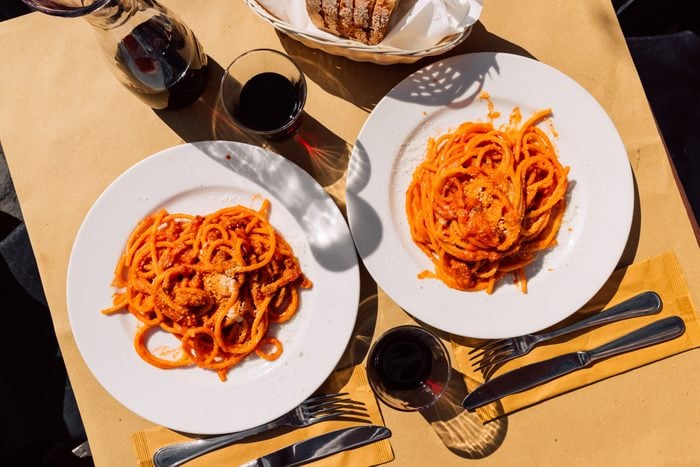
Italian-restaurant etiquette mistakes you need to know
Whether it’s your favorite family-owned restaurant or a beloved chain, virtually everyone has an Italian restaurant go-to. Italian food has become such a part of how many Americans eat that it’s almost impossible to imagine a life without pizza, pasta and gelato. But in the end, it’s just food, and it doesn’t really matter how you eat it, right? Not exactly. Chances are, you’re making some Italian-restaurant etiquette mistakes without realizing it.
Most people assume there’s a general set of etiquette rules that apply no matter where you eat—and that’s true to an extent. After all, no matter what restaurant you’re in, it’s considered rude to chew with your mouth open or pay more attention to your phone than your dining companions. But just like there are certain etiquette rules specific to steakhouses, there are a whole other set of etiquette rules you should be following at Italian restaurants, including the right way to eat pasta. (Seriously, does anyone know how to eat spaghetti the right way?)
We asked etiquette gurus and Italian-restaurant specialists to dish on the dos and don’ts of Italian-restaurant etiquette, from the subtle missteps and outright rude restaurant behavior you should avoid to the “polite” habits restaurant staffers secretly dislike. Here’s what you’ll wish you knew sooner.
Get Reader’s Digest’s Read Up newsletter for more etiquette tips, humor, cleaning, travel, tech and fun facts all week long.
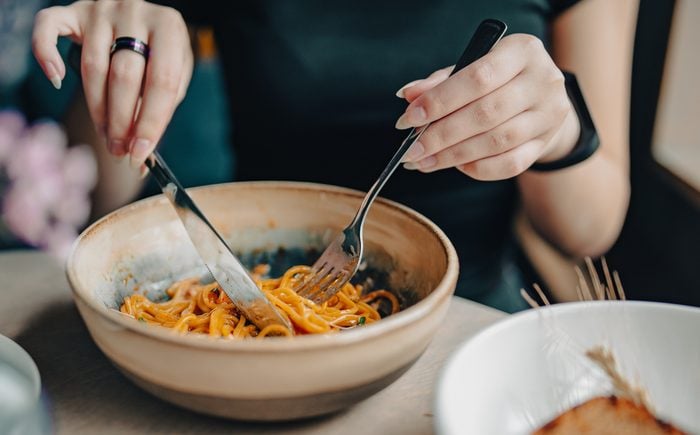
Cutting spaghetti
If there’s one Italian-restaurant etiquette mistake many Americans make, it’s cutting their pasta. “According to Italian etiquette, spaghetti and fettuccine should not be cut with a knife into smaller pieces,” says Alberto Presutti, a specialist in Italian and international hospitality codes of behavior who regularly holds training courses in Italy. Italian etiquette expert Elisa Motterle agrees, adding that it’s also considered improper to use a spoon to twirl your pasta. “You should only use a fork to swirl your spaghetti,” she says.
What to do instead: According to both Presutti and Motterle, the proper way to eat spaghetti or fettuccine is to use your fork to twirl it. “You should be able to twirl it up into a bite-size nest with no stray ends and lift it to your mouth,” Motterle says. However, she does acknowledge that this can be tricky to master, so if you’re really struggling to get just the proper amount on your fork to twirl, go ahead and use your spoon for an assist.
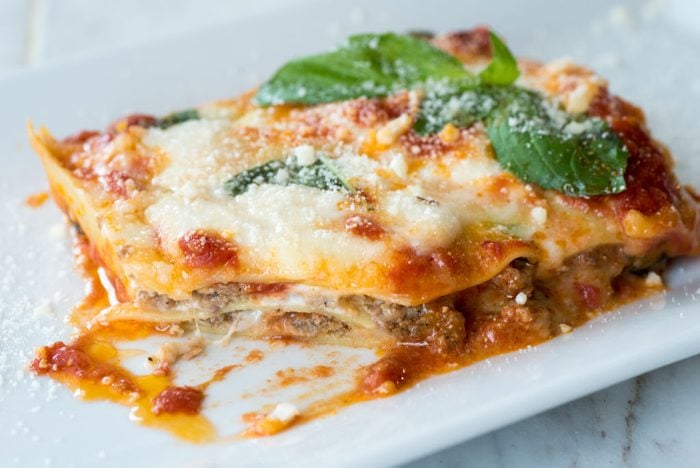
Using your knife to cut lasagna
Just like it’s considered rude to cut spaghetti or fettuccine, Motterle says it’s also improper to use a fork and knife to cut stuffed pasta, like lasagna, stuffed shells or ravioli. This one can leave some Americans baffled, left to stare at their layered lasagna wondering about the best way to dig in. But Italians value pasta so much that they would never cut a knife to it—it should be treated with respect! This is why it’s considered bad dining etiquette to use a knife on any type of pasta.
What to do instead: Fortunately, you can still cut Italian stuffed pasta without breaking any etiquette rules; you just have to use your fork instead of your knife. Motterle says that the best way to do it is to cut the pasta with the side of the fork. And while you’re at it, make sure it’s an appropriately sized piece you can easily fit into your mouth.
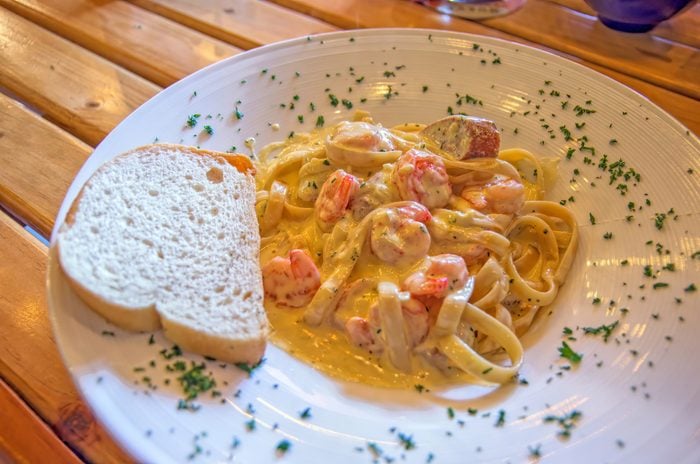
Eating bread with pasta
There’s nothing like warm, crusty Italian bread … but there’s a right time and a wrong time to eat it. If you ask the waiter for a basket of bread to go with your pasta, that would be the latter. According to Motterle, bread should not be eaten with other starchy foods, like risotto or pasta. And check out this interesting food fact: Presutti says garlic bread and buttered bread sticks are not commonly served in Italy; these are American foods, not Italian. Who knew?!
What to do instead: If you go to an Italian restaurant and a bread basket is placed on the table, eat it with your soup or salad, says etiquette expert Jules Martinez Hirst, co-author of The Power of Civility. Or, if you ordered an entrée that isn’t starch-based, you can also enjoy your bread along with your main course.
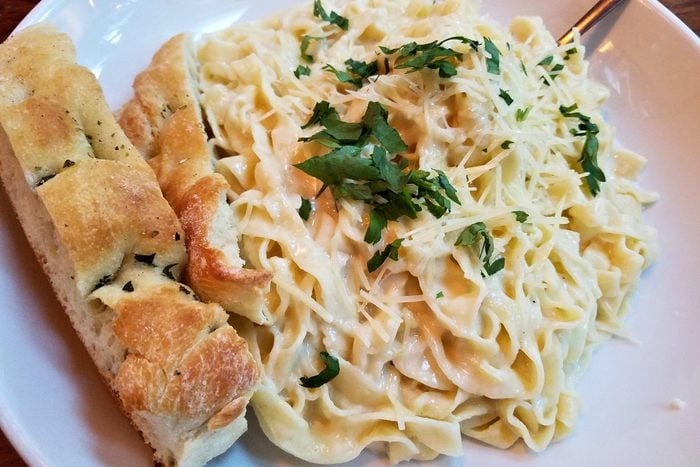
Using bread to soak up pasta sauce
All that delicious sauce! Of course you want to get every last bit of it until your plate is completely clean. But if you’re using bread to soak up sauce at a fancy restaurant, you may raise some eyebrows. “Using a small piece of bread to wipe up any leftover sauce on your plate is a common gesture in a casual setting, but it is considered very casual, so avoid it in a more formal setting,” Motterle says of this surprising Italian-restaurant etiquette mistake.
What to do instead: If it’s spaghetti night at home or you’re heading to a chain restaurant like Olive Garden, go ahead and use your bread to enjoy every last drop of your sauce. But if you’re eating somewhere nice, it’s better etiquette to savor the sauce while you enjoy your pasta and leave any that’s remaining on your plate.
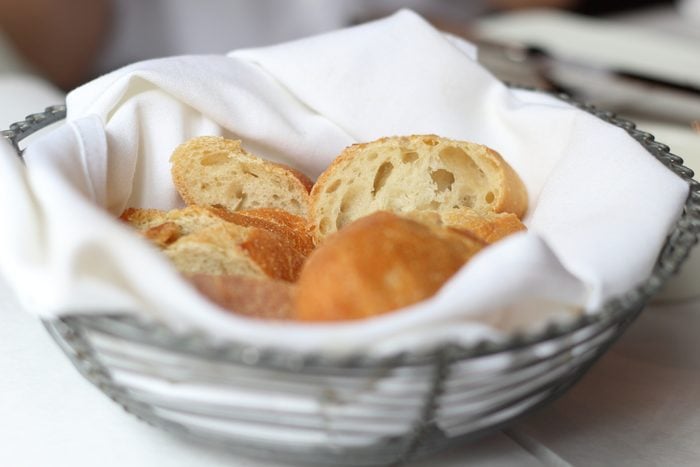
Dipping your bread in the communal olive oil
At Italian restaurants, it’s common for the waiter to put a basket of bread on the table for everyone to share, along with olive oil for dipping and, depending on the restaurant, butter. Hirst says to resist dipping your bread in the communal olive oil or putting your knife in the communal butter and then spreading it on your bread. Both are considered bad form.
What to do instead: If you want to enjoy olive oil with your bread, Hirst says to pour some onto your personal bread plate instead of dipping your bread in the mini bowl of olive oil. For butter, use your knife to get a small serving of butter and put it on your bread plate. Then, use your knife to spread the butter from your plate on your bread. No, this isn’t an etiquette mistake that most people dislike or will even notice, but it is something that will make you look like a novice at your favorite Italian restaurant.
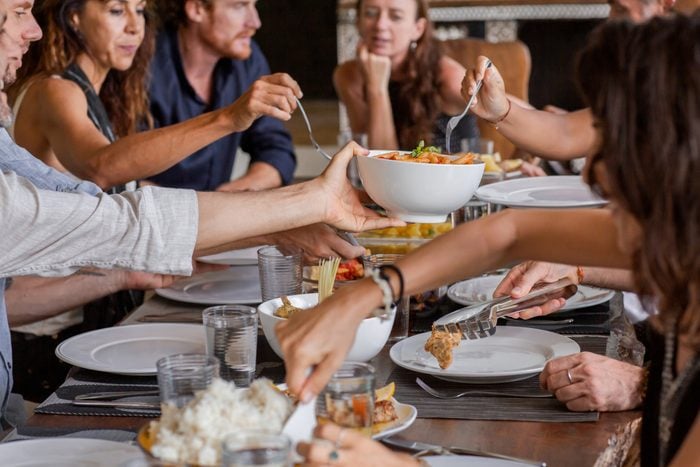
Passing food to the left
If you’re eating at a family-style Italian meal or everyone is sharing appetizers, it’s important to make sure you’re passing the food the right way. Otherwise, it causes confusion, and perhaps even worse, someone may miss out on enjoying something delicious. According to Motterle, passing food to the left is considered a minor etiquette mistake, not just at Italian restaurants but at mealtime in general. Keep this in mind at dinner parties too!
What to do instead: Pass food to the right, and take only what you believe you will eat so you don’t waste food. This is especially the case when it comes to bread. “Bread should never be wasted,” Motterle says. “One should always finish their individual portion of bread.” Remember: Italians treat their bread and pasta very dearly.
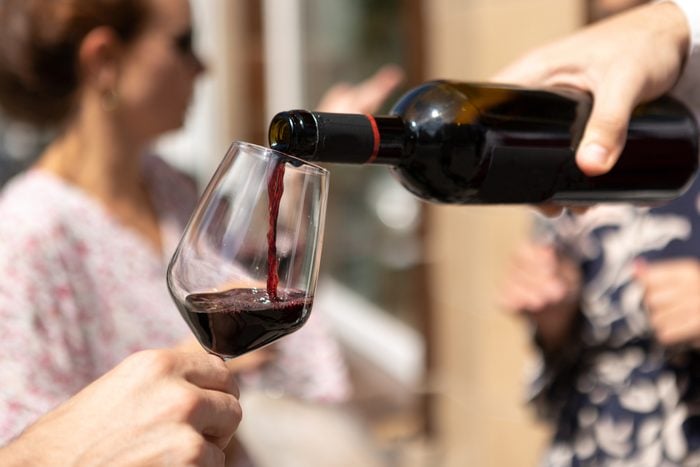
Choosing the “right” wine
Wine is a big part of Italian culture, but deciding which wine to order with your meal can be intimidating. Here, you can relax. According to chef Francesco Basile, Sicilian-born executive chef and owner of San Diego’s Antica Trattoria, it’s more important to get what you will truly enjoy than to play by any wine-pairing rules. In fact, he says, both red and white wines can go with pasta with red sauces, pasta with white sauces or seafood dishes. What’s most important is that you enjoy your meal—and you’re much more likely to do that if you like your wine.
What to do instead: Instead of ordering a wine that you think is the right one to pick, go with what you tend to like or what you’re in the mood for that night. Better yet, ask for a recommendation, telling the sommelier what you’re looking for. It’s an especially good idea to find out if there are any local and seasonal wines to try, from some of the best wines in Napa Valley, Long Island, Oregon or, yes, Italy. If you don’t ask, you might be missing out on a wine that could become your new favorite.
Another thing to think about? All the flavors in the dishes you’ll be enjoying and what notes might complement them. “For example, if you are ordering a pasta with red sauce, it’s not just about the tomatoes; it’s about the herbs in the sauce too,” says Calli Martinez, the owner and wine educator at AltoVino in San Francisco. Do you want something spicy to pair it with? Something citrusy and refreshing? Once you’ve determined what you’re after, you can ask your waiter or the sommelier to point you in the right direction.
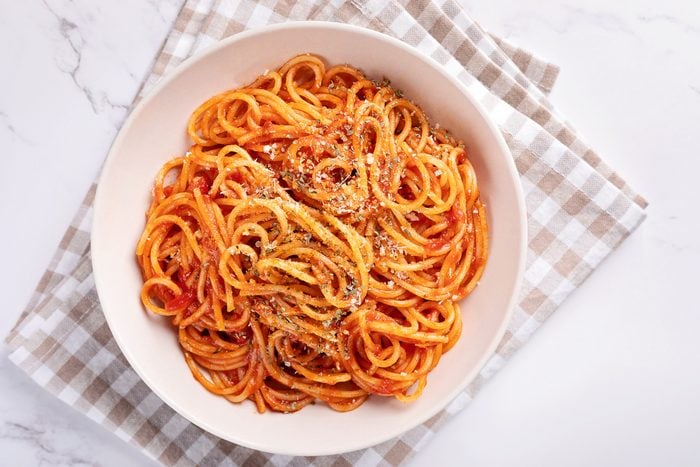
Ordering pasta as a side
There’s a reason Italian restaurants don’t list pasta under side dishes: They are meant to be entrées. “Pasta should never be ordered as a side,” Motterle says. If you want both a salad and pasta but are trying to be calorie conscious, don’t ask the waiter if you can get pasta as a side and a salad for your main meal; they are listed on the menu in their appropriate spots for a reason.
What to do instead: If you want pasta but don’t think you will eat a full entrée serving, eat what you like and ask the waiter if you can get your leftovers to go. None of the etiquette experts say that asking for your leftovers to go is considered rude—even at a fancy restaurant. On the contrary, it’s good that the food is not going to waste.
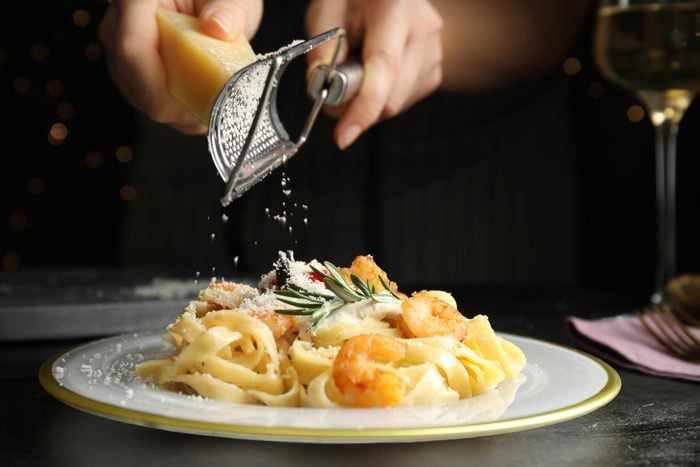
Adding shredded Parmesan to seafood dishes
Curious if asking for more cheese is rude? Presutti and Motterle say it isn’t, but it does matter what you want to put it on. “Italians love to sprinkle Parmesan on pasta, especially on spaghetti and fettuccine,” Presutti says. “Even in restaurants, Parmesan is brought to the table in the cheese bowl so you can use it in the quantity you need.” But Motterle explains that it’s not meant to be used in anything with seafood, such as spaghetti with clams; it takes away from how the dish is supposed to taste.
What to do instead: If your meal is seafood-free, go ahead and ask for shredded Parmesan if you want it. “Asking for extra Parmesan is not rude as long as you do not overuse the cheese,” Motterle says. “Parmesan has a strong flavor and might conceal other flavors present in your dish.”
While it’s a definite Italian-restaurant etiquette mistake to add cheese to a seafood dish, it’s OK to add salt and pepper, if you’d like. This is because these ingredients are very likely already incorporated into your seafood dish, unlike cheese.
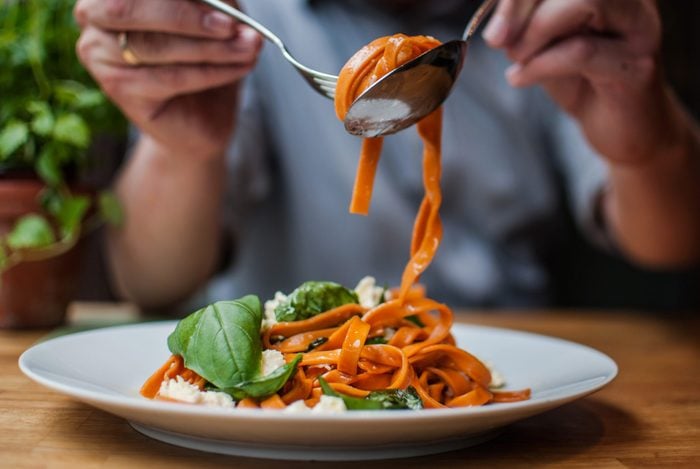
Making the waiter wonder if you’re done eating
Italians love enjoying a leisurely meal, and this is one of the great joys of traveling to Italy. That said, when you’re finished eating your meal in Europe or in the States, there is a proper way to subtly alert the waiter so they aren’t left guessing whether they should clear your plate. Putting your utensils on the tablecloth or on your napkin, or using them to create an “x” on your plate, are all the wrong ways to do it. Putting your napkin on top of your plate is also considered rude.
What to do instead: To indicate that you are finished eating, Hirst says to place your knife and fork diagonally across the plate. If you imagine your plate being a clock face, the end of the fork and knife should both be at 4 and 5, while the sharp ends are at 10 and 11. As for your napkin, place it to the left of your plate when you’re finished eating. And whatever you do, don’t put it on your plate, because this makes a complete mess, both for the person clearing your table and for the one who will need to launder the napkins. Hirst says these rules apply to all restaurants, not just Italian ones.
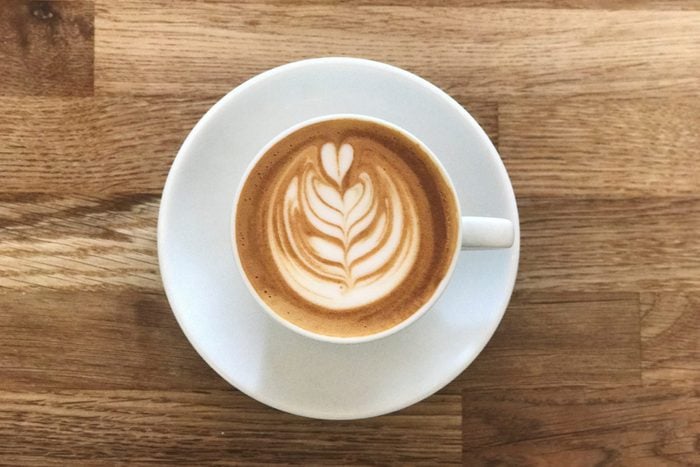
Getting a cappuccino with your main course
Yes, cappuccinos are popular in Italy, but Presutti says that they aren’t typically sipped with an Italian dinner. “Cappuccinos are drunk during breakfast,” he says. Motterle agrees, saying, “Cappuccinos are more of a snack in our view, so it’s OK to have one in the morning, maybe with a croissant. Some people might enjoy it mid-afternoon as a pick-me-up, but we’d never eat a proper meal while sipping cappuccino.” Here in America, however, it isn’t uncommon to see cappuccinos on the menu at an Italian restaurant, but don’t order one with your dinner.
What to do instead: If you want to have a cappuccino, wait until dessert. The flavors will pair much better with sweet treats than savory entrées, anyway.
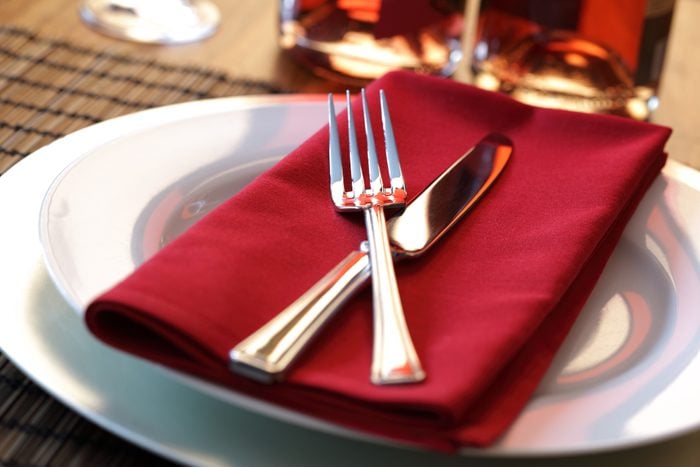
Tucking your napkin into your shirt
When you’re about to enjoy a big plate of spaghetti with red sauce, it’s natural to want to protect your clothing. Tomato stains are no joke! But Hirst says it’s considered rude to tuck your napkin into your shirt.
What to do instead: Be careful! And place your napkin on your lap. If you stick to the other etiquette rules about how to eat your meal—especially pasta—the right way, it’s unlikely that you’ll get anything from your meal on your shirt.
Chances are, you’re not just making mistakes when dining out. Now that you know the top Italian-restaurant etiquette mistakes to avoid, find out the polite habits dinner-party hosts secretly dislike.
Sources:
- Alberto Presutti, specialist in Italian and international hospitality codes
- Elisa Motterle, Italian etiquette expert
- Jules Martinez Hirst, etiquette expert and co-author of The Power of Civility
- Francesco Basile, executive chef and owner of San Diego’s Antica Trattoria
- Calli Martinez, owner and wine educator at AltoVino in San Francisco
